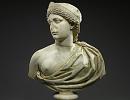Contact Seller
Youngs Antiques
Tel07939070636Please quote Antiques Atlas.


 Edwardian Walnut Two Seater Sofa
Edwardian Walnut Two Seater Sofa
 Walnut Sofa or Window Seat
Walnut Sofa or Window Seat
 Antique Leather Chesterfield Sofa
Antique Leather Chesterfield Sofa
 Austrian Secessionist Ebonised Sofa.
Austrian Secessionist Ebonised Sofa.
 Leather Deep Buttoned Chesterfield
Leather Deep Buttoned Chesterfield
 Antique Victorian Quality Mahogany Inlaid Settee
Antique Victorian Quality Mahogany Inlaid Settee
 A 19th Century French Gilt Wood Window Seat
A 19th Century French Gilt Wood Window Seat
 Antique Victorian Carved Walnut 3 Piece Suite
Antique Victorian Carved Walnut 3 Piece Suite
 Victorian Walnut Framed Chaise Longue
Victorian Walnut Framed Chaise Longue
 19th Century satinwood painted sofa
19th Century satinwood painted sofa
 Top Quality Victorian Window Seat
Top Quality Victorian Window Seat
 Antique Swedish Leather Sofa
Antique Swedish Leather Sofa
Non UK callers :
+44 7939070636
A 19th Century Royal Settee.


A 19th century carved royal settee , upholster in crimson red velvet fabric with a button back.
The back of the settee is finely carved in walnut - with a rampant lion on the left hand side and a rampant unicorn on the right, the shaped moulded top rail being partially gilded.
The settee does need reupholstering or partially restoring as the webbing has broken beneath the seat. Structurally the the frame is very strong and there doesn't appear to be any makers stamps beneath, although one might be uncovered during the reupholstery process.
This is a fantastic one of piece, and is purported to have come from the Sandringham estate after a fire on November 1891, which destroyed 14 rooms on the upper levels of the property. Though I do not have any evidence to support this claim, the settee does clearly bare the emblems of the Royal Garter - the English lion and the Scottish Unicorn.
Seat measurements - Height 44cm x Width 163cm x Depth 60cm
Overall measurements
Height = 92 cm (36.2")
Width = 163 cm (64.2")
Depth = 67 cm (26.4")
SellerYoungs Antiques
View all stock from
Youngs Antiques

 Private dealer
Private dealer
Near Brigg
North Lincolnshire
England
Tel : 07939070636
Non UK callers : +44 7939070636
The back of the settee is finely carved in walnut - with a rampant lion on the left hand side and a rampant unicorn on the right, the shaped moulded top rail being partially gilded.
The settee does need reupholstering or partially restoring as the webbing has broken beneath the seat. Structurally the the frame is very strong and there doesn't appear to be any makers stamps beneath, although one might be uncovered during the reupholstery process.
This is a fantastic one of piece, and is purported to have come from the Sandringham estate after a fire on November 1891, which destroyed 14 rooms on the upper levels of the property. Though I do not have any evidence to support this claim, the settee does clearly bare the emblems of the Royal Garter - the English lion and the Scottish Unicorn.
Seat measurements - Height 44cm x Width 163cm x Depth 60cm
Overall measurements
Height = 92 cm (36.2")
Width = 163 cm (64.2")
Depth = 67 cm (26.4")
Price The price has been listed in British Pounds.
Conversion rates as of 30/MAY/2024. Euro & Dollar prices will vary and should only be used as a guide.
Always confirm final price with dealer.
Date 19th century
19th Century Antiques Material Walnut
Origin English
Item code as964a363
Status Sold
£2800.00 
$3566.92 
€3290.28 

$

€

Conversion rates as of 30/MAY/2024. Euro & Dollar prices will vary and should only be used as a guide.
Always confirm final price with dealer.
View all stock from
Youngs Antiques

 Private dealer
Private dealerNear Brigg
North Lincolnshire
England
Tel : 07939070636
Non UK callers : +44 7939070636
You may also be interested in
 Edwardian Walnut Two Seater Sofa
Edwardian Walnut Two Seater Sofa
 Walnut Sofa or Window Seat
Walnut Sofa or Window Seat
 Antique Leather Chesterfield Sofa
Antique Leather Chesterfield Sofa
 Austrian Secessionist Ebonised Sofa.
Austrian Secessionist Ebonised Sofa.
 Leather Deep Buttoned Chesterfield
Leather Deep Buttoned Chesterfield
 Antique Victorian Quality Mahogany Inlaid Settee
Antique Victorian Quality Mahogany Inlaid Settee
 A 19th Century French Gilt Wood Window Seat
A 19th Century French Gilt Wood Window Seat
 Antique Victorian Carved Walnut 3 Piece Suite
Antique Victorian Carved Walnut 3 Piece Suite
 Victorian Walnut Framed Chaise Longue
Victorian Walnut Framed Chaise Longue
 19th Century satinwood painted sofa
19th Century satinwood painted sofa
 Top Quality Victorian Window Seat
Top Quality Victorian Window Seat
 Antique Swedish Leather Sofa
Antique Swedish Leather Sofa







